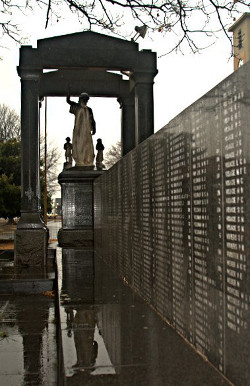The Volksrust Concentration Camp Memorial: A Testament to Human Resilience
In the annals of history, there are episodes that are both deeply poignant and tragic. The Second Anglo-Boer War offers one such chapter, one where a dark shadow was cast by the concentration camps established by Britain. Among these camps, the Volksrust concentration camp holds a prominent place, bearing witness to the suffering of many innocent lives.
As the Second Anglo-Boer War intensified, Britain adopted a strategy to weaken the Boer forces. Their tactic: round up non-combatants living in the countryside, primarily women and children, and confine them to camps. This tactic was meant to deprive Boer forces of essential support, making their survival in the field progressively challenging.
The establishment date of the Volksrust camp remains ambiguous, but by May 1901, it was home to nearly 5,000 souls. Initially, those interned in this camp appeared less destitute than those in some other camps. The earliest arrivals even had the essentials for a tented life. However, as the months passed, a grimmer picture emerged. By September 1901, new arrivals were deemed 'of a very low class' and ill-equipped for life in confinement.
Despite the hardships, there was an element of freedom. Inmates were permitted to wander freely in the village and within the military lines during daylight hours.
But the camp was plagued with mismanagement, leading to horrendous living conditions. The outcome was devastating: malnutrition and disease rampantly claimed lives, with a heart-wrenching total of 772 women and children perishing.
Emily Hobhouse, a notable humanitarian and welfare campaigner, visited the camp and was appalled at the sight. She observed that the camp was woefully overcrowded. Her accounts and activism played a role in drawing attention to the plight of those interned in these camps.
In 1918, the town of Volksrust decided to pay homage to those who suffered in the concentration camp. At Voortrekker Park, located on the intersection of Joubert str and N11, an imposing memorial status and wall of remembrance stand tall. Every name of the 772 souls who lost their lives in the camp is etched on a black marble wall. The memorial concludes with a pristine white marble statue, symbolizing hope and remembrance.
The Volksrust concentration camp memorial stands not just as a testament to a painful past but as a reminder of the indomitable human spirit. It speaks to the resilience of a community that rose from the ashes of adversity and chose to remember, ensuring that future generations never forget the price of freedom and the cost of conflict.
